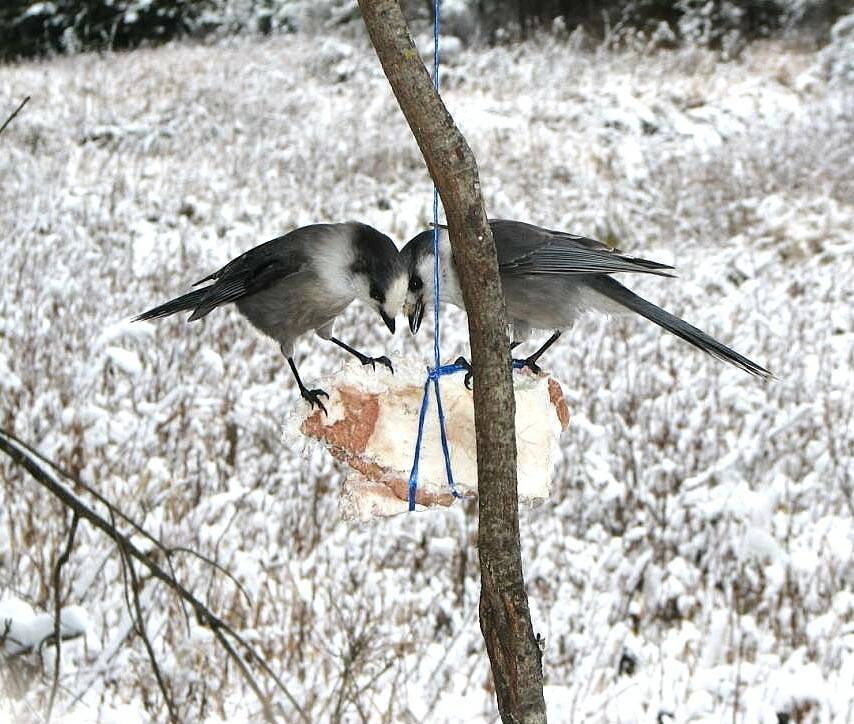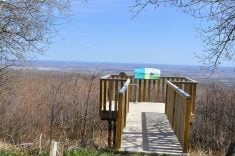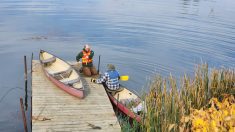Manitoba has a variety of landscapes and scenic features worthy of attention. Our marshes are sometimes overlooked on that list.
Spring and early summer are particularly good times to explore these locations.
They may not seem glamorous but Manitoba’s marshes can yield a wealth of wildlife sightings and education on these critical sites to the province’s hydrology.
Read Also

Hunting with whiskey jacks
Canada jays, or whiskey jacks, are bold little deer hunting pals that don’t mind getting close, if it means a piece of the offal or deer fat left over from a successful forest hunt in Manitoba.
Oak Hammock Marsh is perhaps the best-known example of marsh-based conservation tourism in Manitoba. Located about midway between Stonewall and Selkirk, it is designated as an Important bird area by Bird Studies Canada, thanks to its role as a breeding and migratory staging area for waterfowl and other birds. More than 280 bird species have been recorded there and more than 90 species nest in the region.
The site is a remnant of a much larger marshy area that once spread from the northern edge of Winnipeg to the southern tip of Lake Winnipeg. After large sections were drained for agriculture, this small area was preserved with dikes, marsh compartments and nesting islands. It measures about 8,840 acres.
In the early 1990s, a conservation and reception centre was built. Today, the facility serves as the Harry J. Enns Wetland Discovery Centre, as well as the national headquarters of Ducks Unlimited Canada.
MORE sightseeing in Manitoba with Donna Gamache
Plan for at least half a day if you visit Oak Hammock Marsh. There is the discovery centre to explore, as well as trails running through the area and the option to paddle a canoe through wetter sections. Watch for pelicans, geese with young ones and the ruddy duck with its distinctive blue bill. Near the centre of the site, check out the Richardson ground squirrel colony.
The discovery centre is open year-round from 10 a.m. to 4:30 p.m., but the paths and boardwalks are always open. For more information, visit the website at oakhammockmarsh.ca.

Whitewater Lake
Whitewater Lake, southwest of Boissevain and east of Deloraine, is an especially good marshy area to visit if you live in western Manitoba. Birders from across the province know it as a stopover for migrating birds, as well as a nesting site for species that stay in southern Manitoba.
The alkaline lake was once at risk of drying up. In the late 20th century, there were joint efforts between Ducks Unlimited and the provincial conservation department to better control water levels against dry years.
In more recent times, the region has had the opposite problem. High water levels have caused erosion on roads and loss of farm land.
A wildlife viewing site was developed on the south side of the lake, but has now been disassembled.
It hasn’t stopped birds from using the site, and Whitewater Lake has become a go-to spot for those looking for rare visitors such as the glossy and white-faced ibis. Three varieties of egrets − once only found in the southern U.S. − are also seen here now: the great egret, snowy egret and the somewhat smaller cattle egret.
Whitewater Lake is another official Important bird area, designated for its significant numbers of waterfowl and shorebirds.

Delta Marsh
Delta Marsh is at the south end of Lake Manitoba, north of Portage la Prairie. Shorebirds, geese, pelicans and various ducks frequent the shallow water, while songbirds fly through treed sections, especially during migration.
On one recent visit, I spotted two red-headed woodpeckers, which are classed as a threatened species in Canada.
Be sure to visit the public beach on the west side of the site, as well as the marshy area on the east. Follow the boardwalks through the marsh, read the informative signs and climb the observation tower. If you’re a fishing fan, bring your tackle box to try for carp or northern pike at the bridge.
Other options
The Kaleida Marsh, southeast of Manitou, is a smaller marsh but easy to visit because roads bisect it. Birders can stay inside a parked car, using the vehicle as a sort of blind. This sometimes means various ducks, wading birds, gulls and blackbirds will venture close.
Wherever you live in Manitoba, there are marshes not too far away. In the Interlake, the Shoal Lakes are significant marshy areas. Those living near Clear Lake in Riding Mountain National Park can explore the popular Ominnik Marsh and walk the boardwalk.

Several provincial parks also contain small marshy areas, such as Marshs Lake in Spruce Woods Provincial Park. Painted turtles and the occasional snapping turtle are sighted here.
There are many options for a day trip to one or more of these spots. Watch for wildlife—not only birds and mammals, but reptiles and amphibians—or study the variety of bulrushes, willows and other vegetation. A trip to a marsh can become a useful science lesson for those with young children.















